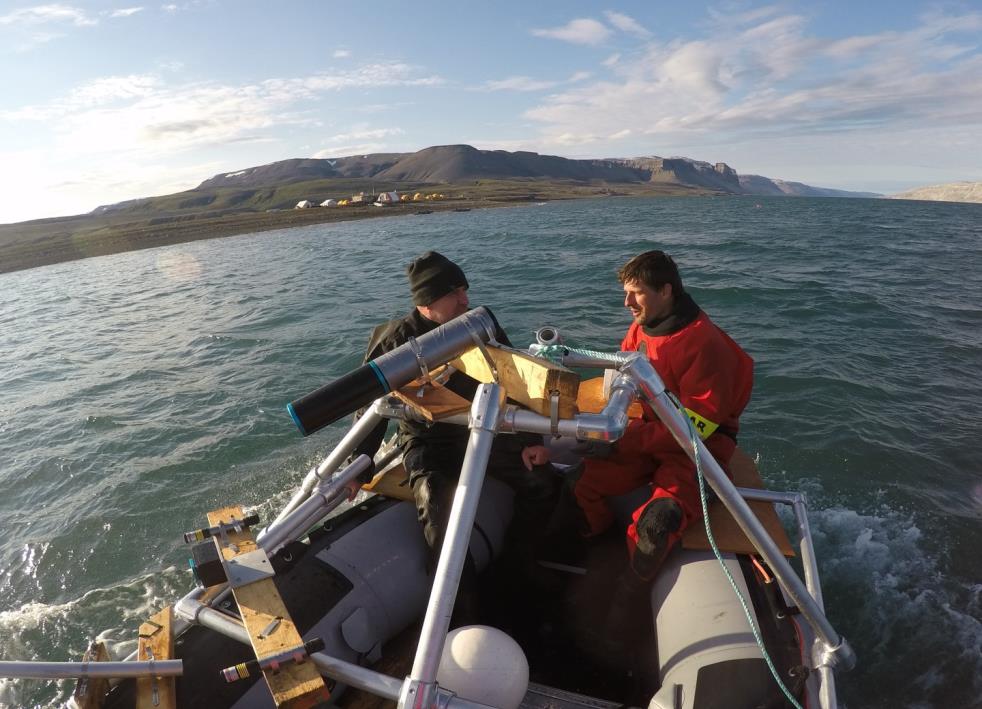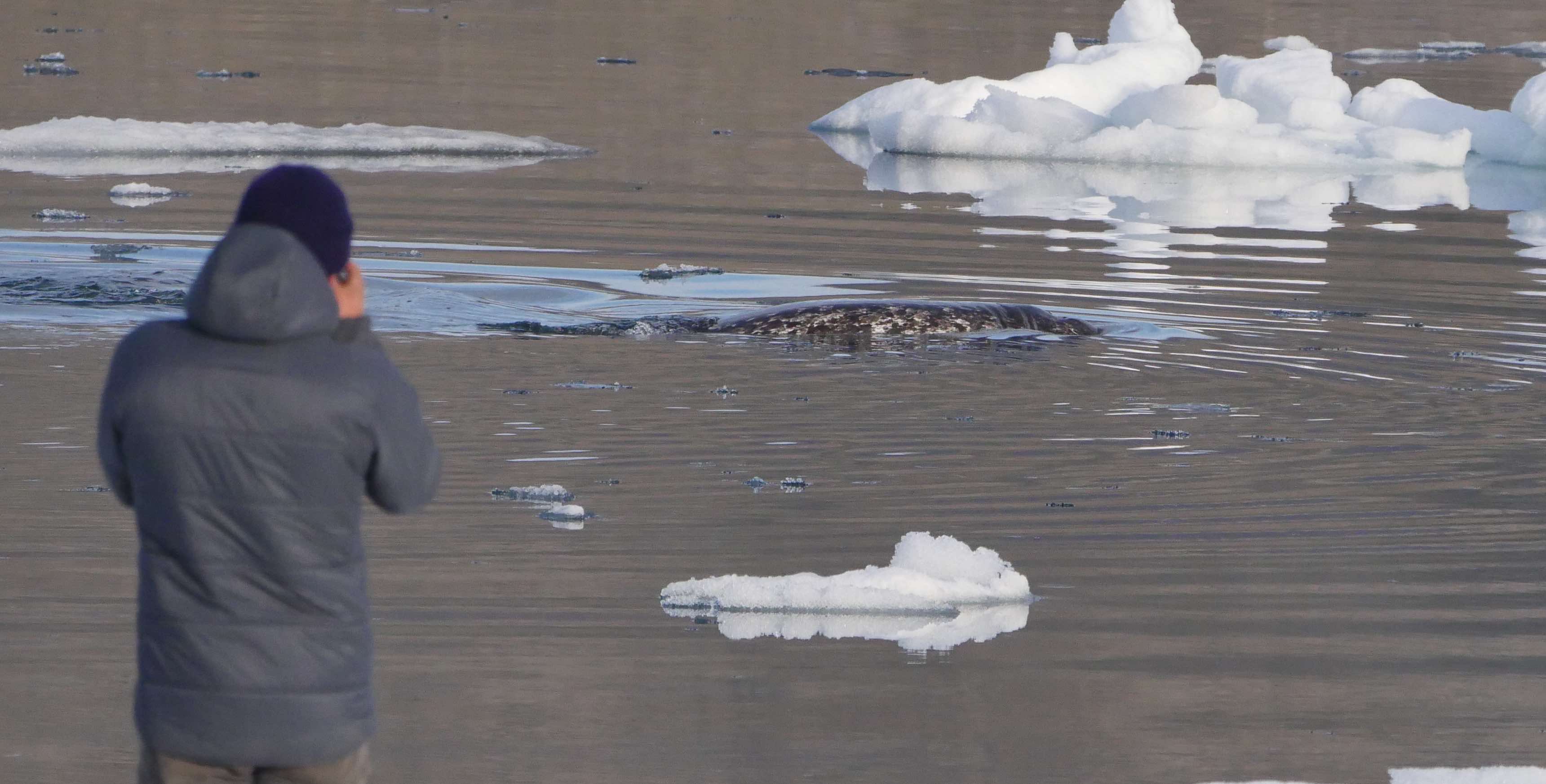2018 Eclipse Sound Narwhal Research Project

Map: Tremblay Sound.
Our research project is based in Tremblay Sound, Nunavut (near Pond Inlet) where Narwhals summer for up to three months every year (mid-July to mid-October).
Narwhals will once again be equipped with satellite transmitters as part of the Ecosystem Approach to Tremblay (EAT) 2018 project. This map shows the movement of 18 narwhals during September 8-22, 2017. Narwhal #4 covered 540 km during those two weeks. Click here to view the full interactive map.
About the mission
Fisheries and Oceans Canada (DFO), in collaboration with Canadian experts, academia, and other government departments will be returning to Tremblay Sound, near Pond Inlet Nunavut, to lead a research mission to further our study of Narwhals and their habitat from July 15 to Sept 15, 2018.
The research project will build on previous successful field seasons focusing on studying narwhals and their ecosystem. The project partners will study fine scale movements of whales in Tremblay Sound, and how these movements relate to ecological and environmental drivers such as prey availability, shipping traffic and oceanographic parameters. This will improve understanding of Narwhal behaviour and their use of the habitat around Tremblay Sound to inform conservation and management efforts. The project will also continue to use UAV based aerial surveys to assess Narwhal group numbers and structure, and ability to identify individuals via this imagery.
In 2016, the use of the UAV allowed DFO and our partners to gather first-of-its kind footage that informs part of the puzzle as to why Narwhals have a unicorn-like Tusk. The footage showed a new, utilitarian purpose for Narwhal tusks: namely that Narwhals also use their tusks to hit and stun fish prior to eating them.
The Narwhal tusk feeding behaviour observed at Tremblay Sound, also raised interesting questions about the Narwhal that are informing DFO’s ongoing research in the area: such as whether the behaviour was unique to that location or is more generalized; whether the small percentage of female Narwhals with tusks are also employing this feeding strategy, and what it means for the females without tusks.
Beyond those questions, given the region is experiencing an increase in potential stressors that may affect narwhals, including shipping, climate-driven habitat change (variation in sea-ice breakup and freeze-up), and increasing presence of predators (killer whales), an improved understanding of narwhal behavior and critical habitat is required. Our research will use satellite telemetry to assess whether there is movement between the Eclipse Sound and Admiralty Inlet Narwhal stocks, migratory pathways, winter range location, feeding and diving habits, interactions with marine vessels, and habitat preferences of Eclipse Sound narwhals.
The team
- Fisheries and Oceans Canada
- Parks Canada
- WWF Canada
- University of Windsor
- Mittimatalik Hunters and Trappers Organization
- Oceans Wise
- Université de Montréal
- Université du Québec à Rimouski
- Government of Nunavut
- University of New Hampshire
- University of British Columbia
- Golder Associates Ltd.
- National Institute of Polar Research, Japan
Research tools and techniques
- UAV
- Unmanned aerial vehicles (UAVs), also known as drones, are small, remotely operated aerial vehicles, most often equipped with cameras. During this mission, drone surveys will be completed daily to assess group composition (e.g. different age classes and sex), individual and group behavior, particularly with respect to shipping, and body condition.
- Satellite Telemetry
- DFO will place tags with satellite transmitters on Narwhals that will allow us to track their movement. This allows us to better understand their migration paths and will also help us validate survey estimates of narwhal based on surface observation. The transmitters will also provide us with information on narwhal vocalizations, dive and movement behavior, all of which will be used to inform ecosystem based management of this species and the habitat.
- BRUV
- Baited Remote Underwater Videos (BRUV) are made of GoPro cameras inside waterproof housings that can withstand the high pressure and cold temperatures of deep waters. They are deployed randomly on the sea floor between 100 and 200m depth for a 3h period. They allow to film the animal feeding on the bait and estimate their length using the parallel beams of the two lasers and the known distance between the camera and the bait (85cm). We also use CTD (conductivity, temperature, and depth) to measure oceanographic parameters (salinity, temperature, depth, etc.) at the time of the deployment.
- Acoustics
- DFO will place hydrophones (under-water microphone) to record underwater sounds such as narwhal vocalisations. The recordings will be used to determine the presence of narwhals in Tremblay Sounds and also to investigate the presence of buzzing calls related to feeding. Information about narwhal vocal behaviour will be use to assess the potential impact of ship noise on narwhals.
- Date modified:






